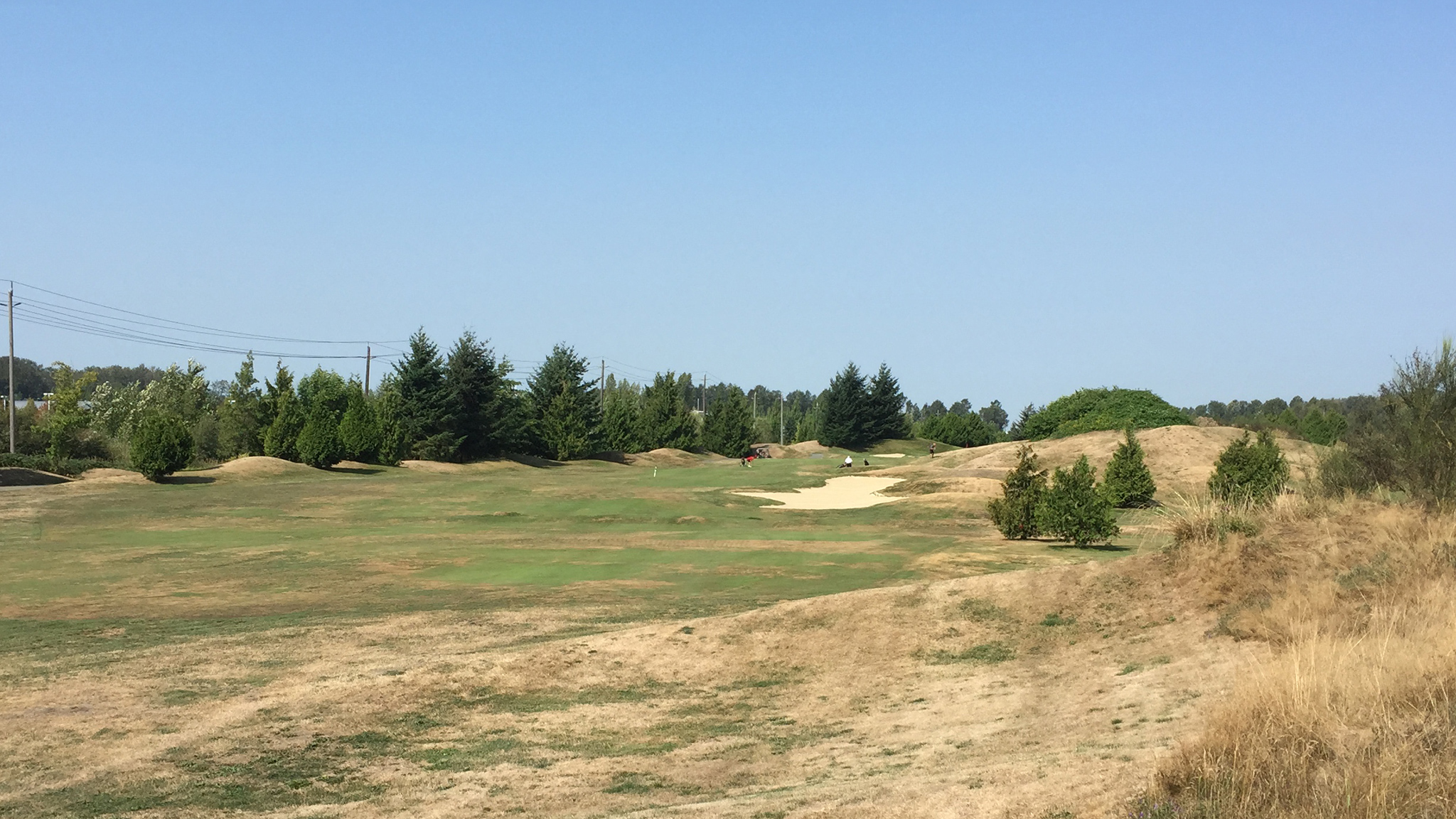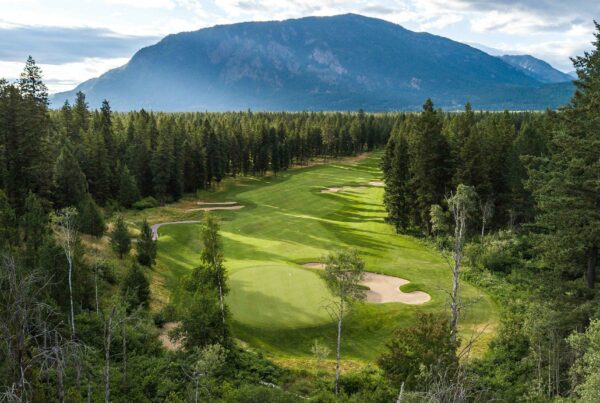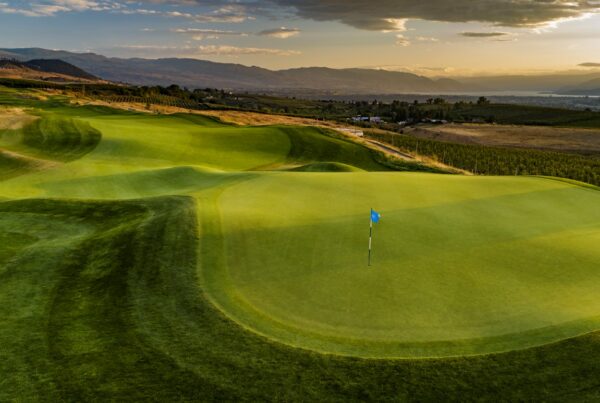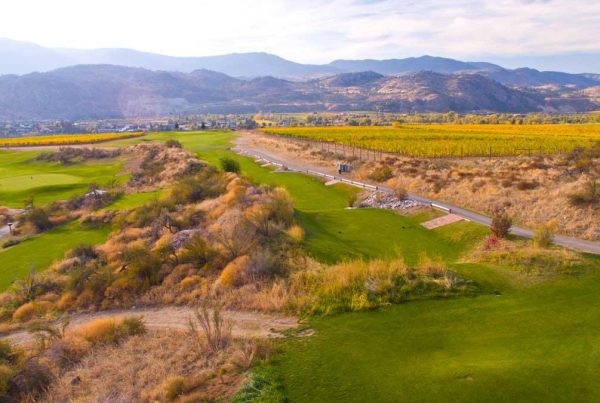ISSUE
Members of the Allied Golf Association of British Columbia (AGA – BC) recognize that water is a valuable and essential resource requiring protection and conservation, ensuring it remains available for generations to come. Water is also critical for the health and sustainability of turfgrass and therefore, essential to the long term health and sustainability of golf facility management and the golf industry.
AGA-BC members use water wisely and support water restrictions during times of drought. During prolonged hot and dry periods, BC golf courses take additional steps to help conserve water. Key message from AGA – BC:
‘Golf is good for our health, our environment, and the economy of British Columbia.’
BACKGROUND
In an often harsh and variable Canadian climate, golf courses in British Columbia are challenged by any number of factors that can negatively affect the quality and playability of the course. At times, the severity of such damage can render a golf course, or portions thereof, completely unplayable. Our best line of defense is healthy turf.
Healthy turf requires the appropriate inputs in the right amounts at the right time by qualified personnel including irrigation water. The members of AGA – BC will suffer devastating economic hardship without access to irrigation water for a prolonged period.
- Golf courses are not motivated to apply more water, in fact, the opposite is true. Water is often a costly input and more water does not mean healthier turf.
- Effluent water, aka grey water or reclaimed water, is used by many golf courses for irrigation purposes. Other non-potable and untreated irrigation sources can include surface water, well water and storm-water containment.
- An irrigation system is the largest single infrastructure investment on a golf course. Golf course Superintendents are trained professionals who take a responsible approach to water use and who operate sophisticated irrigation systems in conjunction with plant health requirements and highly specialized monitoring tools.
- The golf industry collectively allocates significant funds toward research programs and training that help ensure golf courses are being managed in a sustainable and environmentally friendly manner. Ongoing technological and agronomic improvements assist golf courses in their water use reduction and management efforts.
- Accreditation programs such as the prestigious Audubon International Society and Golf Environment Organization ‘Foundation for Sustainable Golf’ create a voluntary framework for golf courses to follow promoting and encouraging an extremely high level of environmental stewardship, typically far beyond regulatory expectations, including the judicious use of our water resource.

BENEFITS OF TURF
It’s safe to say that many people are aware that green spaces and trees in particular, benefit the urban environment. Although often going unrecognized, healthy and actively growing turfgrass plays a vital role as well. Here are some things turf can do1
TURFGRASS PREVENTS EROSION – The fibrous root system that turfgrass forms binds the soil together preventing it from being carried off by rains and wind. The blades of grass or canopy, also slow down rainwater dramatically reducing the amount of soil being carried off by the force of the water. With soil erosion becoming an increasing problem, turfgrasses can play a vital role in reducing losses of high quality topsoils.
TURFGRASS REGULATES TEMPERATURE – The process of transpiration has a cooling effect that lowers the temperature of the air around the turfgrass plant. With the high density of the plants transpiring within a stand of turfgrass, the need for air conditioning can be significantly reduced, conserving energy for other uses. Studies have shown that the amount of heat given off by bare land or poorly maintained turf is substantiality more than that of healthy, well maintained stands of turfgrass.
TURFGRASS REPLENISHES AIR – Plants take up carbon dioxide and release oxygen into the atmosphere
(air) and grass is no exception. The amount of oxygen that a 15 x 15m lawn produces can support 4 people for the entire year. The average 18 hole golf course has been studied and is known to produce enough oxygen for 10,000 people! Well managed turfgrass also helps reduce pollen production by preventing the growth of weedy species which produce significant amounts of airborne pollen. Dust and other airborne allergens are also prone to getting trapped within stands of turfgrass.
TURFGRASS SEQUESTERS CARBON – Stands of healthy turfgrass play an important role in carbon sequestration, or removal of carbon from the atmosphere. During photosynthesis, carbon dioxide is converted into plant biomass allowing for long-term storage of carbon below ground within roots. Where grassland systems differ from other ecosystems is that the ratio of below-ground biomass to above-ground biomass is relatively large. Since turfgrass is an undisturbed and highly productive system, it has the ability to sequester a large amount of carbon with studies showing that a hectare of golf course turf is capable of sequestering 1 tonne of carbon into the soil per year for 30 years. As this sequestration occurs primarily in the soil it is a more stable form of carbon storage than with above-ground plant biomass.
TURFGRASS REDUCES RUNOFF – Turfgrasses slow down the speed and reduce the force of flowing water, allowing more of it to be absorbed in the soil to the benefit of groundwater reserves. Also, any sediment that has also been picked up by the water is invariably trapped within the stand of turfgrass. This prevents many of the pollutants and other chemicals that rainwater gathers from ending up back in our water system; instead they go in the soil where they can be broken down safely.
TURFGRASS PROMOTES SAFETY – Healthy turfgrass serves as a barrier to fire damage and is capable of preventing large fires from spreading out of control. Well maintained lawns also deter insect pests from invading and creating their habitat and rodent pests are typically deterred from crossing large areas of turf. Turfgrass is also a soft surface for recreational purposes. It is important for a variety of sports as statistics indicate injuries are reduced when compared with artificial surfaces. Natural turf also offers a safe, resilientsurface for children, many of which are prone to injuring themselves while playing.
TURFGRASS SUPPORTS BIOREMEDIATION – Pollutants, such as hydrocarbons and heavy metals, often end up in our soil and are detrimental to the health of people, plants and animals. These substances can be broken down by bacteria, fungi and other microorganisms within the soil. Healthy stands of turfgrass possess an extensively fibrous root system, providing both a habitat and energy source for these populations and allowing them to be much more productive than they would in the absence of turfgrass.
1 Source Canadian Turf Research Foundation www.turfresearchcanada.ca
About AGA – BC
AGA – BC is a provincial organization dedicated to providing one cohesive voice for multiple sectors of the golf industry of British Columbia. Member groups include golf course owners (NGCOA), golf professionals (PGA of BC), golf course superintendents (BCGSA), the governing body for amateur sport and players (BCGA), golf course managers (CMAC), BC Golf Marketing Alliance (BCGMA) and the body charged with turfgrass research and development (WCTA).
Golf is the number one sport in Canada based on participation and is played by an estimated 812,000 resident golfers in British Columbia at over 300 golf facilities.
The BC golf industry employs an estimated 51,000 people generating $2.3 billion in household income and $858 million government tax revenue.
Golf in British Columbia generates $3.7 billion in GDP through direct, indirect and induced spending impacts. The total direct economic activity (total direct sales) resulting from British Columbia’s Golf Industry is estimated at $3.4 billion2
For further information, please contact AGA – BC President, Brett Finlayson, at president@aga-bc.org.






